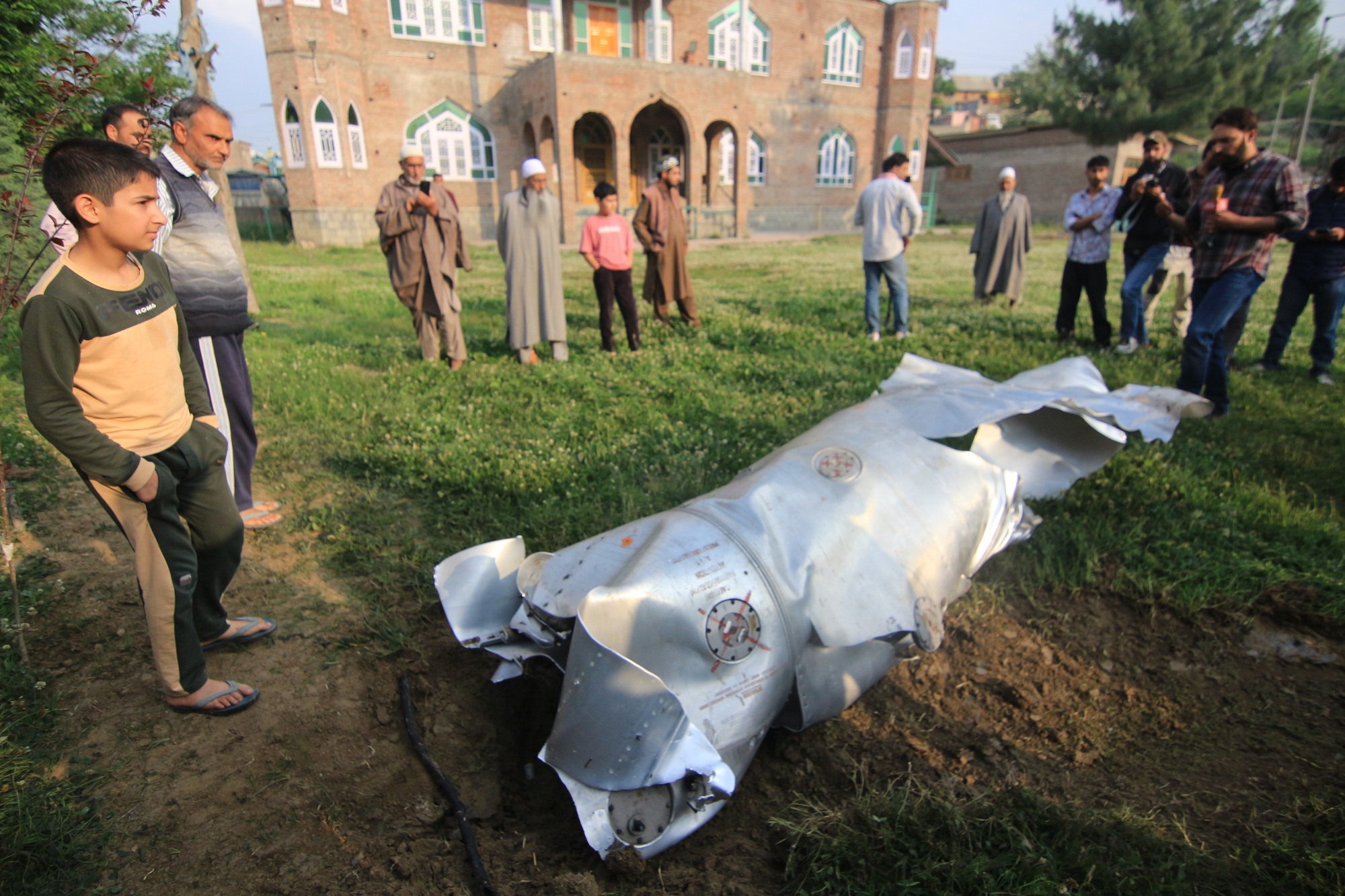In the early morning of May 7, India launched missile and air strikes – referred to as Operation Sindoor – at nine locations within Pakistan and Pakistan-administered Kashmir. Indian authorities said it was a response to the April 22 attack in Pahalgam, which left 26 civilians dead, most of them Indian tourists. The stated targets were terrorist facilities associated with groups like Jaish-e-Mohammed and Lashkar-e-Taiba.
Several Indian losses have been verified, casting serious doubt on the success of the operation from India’s perspective
Indian sources report that the strikes involved the use of SCALP-EG land-attack cruise missiles and AASM HAMMER precision-guided bombs. India is believed to use the export version of the SCALP-EG, which has a range of roughly 250 kilometers. The AASM HAMMER, when deployed from high altitude and speed, can reportedly reach targets up to 70 kilometers away.
Following the strikes, images circulated online showing the discarded booster and nose cone of at least one BrahMos PJ-10 cruise missile recovered within Indian territory. The BrahMos, a supersonic cruise missile co-developed by India and Russia, is based on the Russian 3M55 Oniks – also used by Russia in Ukraine – and has a range of 300 to 500 kilometers.
Although the Indian strikes inflicted damage on multiple sites within Pakistan, public discourse quickly shifted to focusing on Indian losses. Indian media initially reported that several Indian aircraft had been downed by Pakistani forces, but these reports were later removed. This was likely due to official pressure, as has been seen during previous India-Pakistan military confrontations.
Nonetheless, several Indian losses have been verified, casting serious doubt on the success of the operation from India’s perspective. Wreckage imagery shared on social media indicates that India lost at least one French-built Mirage 2000H; an aircraft that could be either a Soviet-era MiG-29UPG or a Russian-origin Su-30MKI; and one Dassault Rafale F3R, India’s most modern multirole fighter. Of these, only the Rafale loss has been publicly acknowledged – it has been confirmed by a senior French intelligence official, according to CNN.
All wreckage was recovered within Indian territory, some as far as 100 kilometers from the border, indicating that Indian aircraft likely did not cross into Pakistani airspace.
Pakistan likely used the PL-15E air-to-air missile to shoot down the Indian jets. The PL-15E is the export version of China’s PL-15. It has a range of approximately 145 kilometers, compared to 200 to 300 kilometers for the domestic variant. It has a dual-pulse motor (which has two separate motor burns) capable of accelerating the missile to speeds over Mach 5.
Pakistan integrates the PL-15E with its JF-17 Block III and J-10CE fighter aircraft, which it also received from China. The J-10CE has a large nose cone with a powerful radar, enabling it to detect and engage targets beyond the missile’s maximum range. In contrast, the JF-17 Block III’s radar is limited to a range of approximately 100–120 kilometers.
Given that the downed Indian aircraft were located deep within Indian territory, it stands to reason that it was launched from a J-10CE, although this remains unverified. Midcourse guidance may have also been provided by Pakistan’s Erieye aircraft (acquired from Sweden’s Saab) or by Chinese-origin ground-based radar systems deployed by Pakistan.
From a military standpoint, the confirmed shooting down of multiple Indian fighter jets marks a potential turning point in airpower dynamics on the subcontinent. India has traditionally held an advantage in the air, but Pakistan’s recent procurement of more capable Chinese aircraft has led some analysts to argue that this edge is narrowing. The events of the previous night seem to support that view.
This being said, operational rather than technological factors likely played a greater role in this case. Indian forces appear to have misjudged Pakistan’s ability to hit aircraft from this range, resulting in Indian pilots loitering in what turned out to be contested airspace
At the same time, Pakistani operators demonstrated a fairly impressive level of preparation and coordination. They likely anticipated the strike and had countermeasures in place. This required executing a relatively complex kill chain – involving the detection, tracking, and engagement of targets – with evident success.
At present, it remains unclear if and how Pakistan intends to respond to the Indian strike. The fact that it succeeded in downing several Indian aircraft may lead to a more restrained reaction. Pakistan may think that its downing of Indian aircraft is punishment enough.








Comments